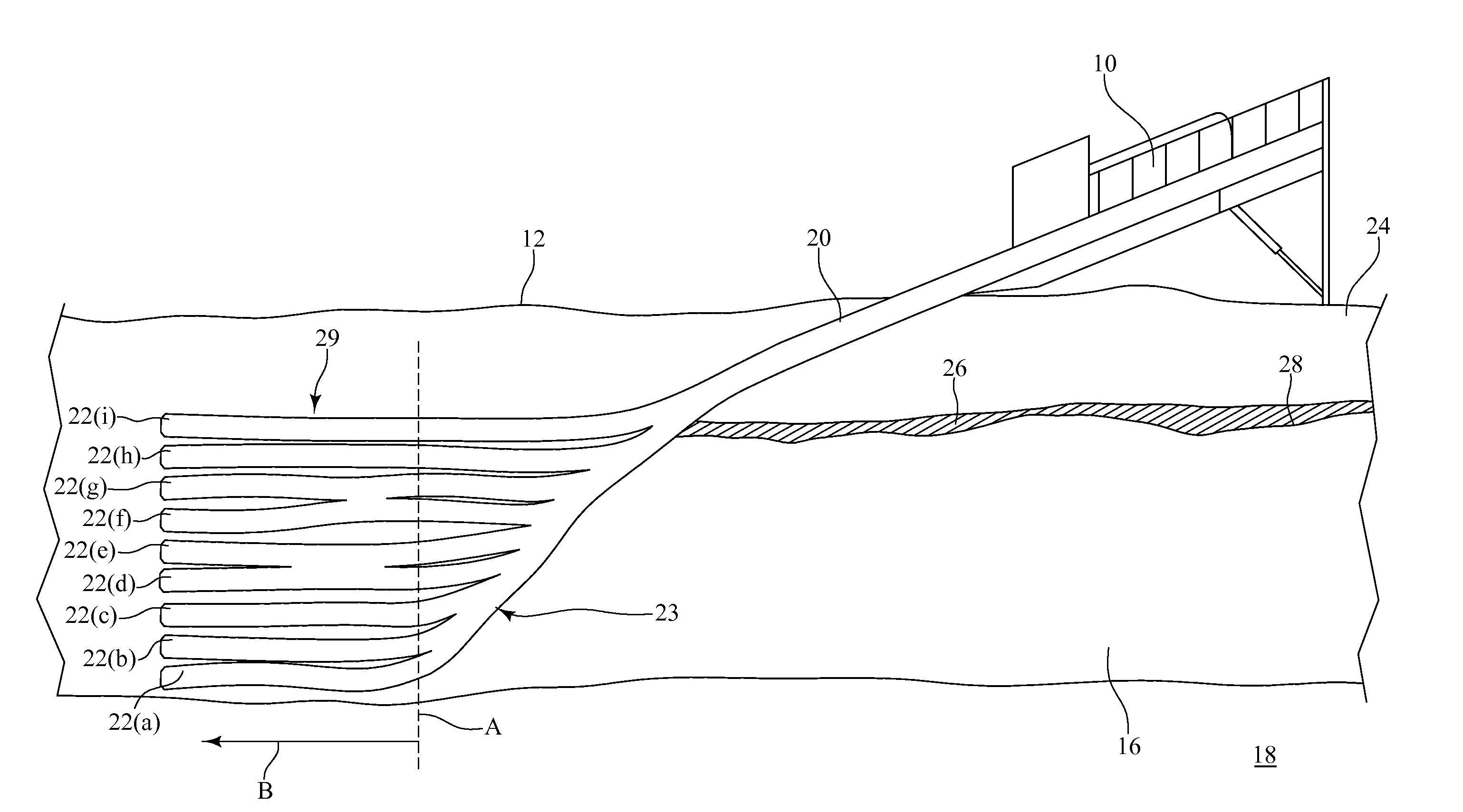Process for insitu treatment of soil and groundwater
a technology of insitu treatment and groundwater, which is applied in the direction of water installations, drilling machines and methods, and well accessories, etc., can solve the problems of affecting the health of people, affecting the use of the land, and affecting the use of the land. , the presence of hazardous compounds in subsurface soils, surface water and groundwater is a well-documented and extensive problem
- Summary
- Abstract
- Description
- Claims
- Application Information
AI Technical Summary
Benefits of technology
Problems solved by technology
Method used
Image
Examples
Embodiment Construction
[0022]The present invention provides a method for the insitu treatment of contaminated groundwater and soil with solid environmental reactant(s).
[0023]Aspects of the present disclosure provide a method for the installation of PRBs without the need for trenching. Directional boring may be used when trenching or excavating is not practical or cost effective. For example, when there are improvements to the land above the leading edge of a contaminated groundwater plume it may be advantageous to install a PRB with directional drilling rather than trenching. Directional boring, directional drilling, or horizontal directional drilling (HDD), may minimize disruption to the surface environment since no open trench is created and heavy equipment may not be required to move across the land. A directional drill may be suitable for a variety of soil conditions and jobs including installing a PRB under a road or structure. Boreholes in excess of a mile long may be installed and / or diameters up t...
PUM
| Property | Measurement | Unit |
|---|---|---|
| diameters | aaaaa | aaaaa |
| angle | aaaaa | aaaaa |
| angle | aaaaa | aaaaa |
Abstract
Description
Claims
Application Information
 Login to View More
Login to View More - R&D
- Intellectual Property
- Life Sciences
- Materials
- Tech Scout
- Unparalleled Data Quality
- Higher Quality Content
- 60% Fewer Hallucinations
Browse by: Latest US Patents, China's latest patents, Technical Efficacy Thesaurus, Application Domain, Technology Topic, Popular Technical Reports.
© 2025 PatSnap. All rights reserved.Legal|Privacy policy|Modern Slavery Act Transparency Statement|Sitemap|About US| Contact US: help@patsnap.com



